1 Introduction
Disclaimer!!
THIS TEXT IS VERY PRELIMINARY AND IN PROGRESS: PLEASE DO NOT CITE.
In this section we will learn
- What is economics about?
- What is economics good for?
- What is the role of theory in economics?
- How do Economists deal with data?
1.1 What is Economics All About?
We can get a good sense of what economics is all about when we look at the most frequently used words that show up in publications in scholarly economics journals. In the 1970s the most frequently used words in economics journals were words like
Model
Price
Theory
Now the most frequently used words in economics are:
Evidence
Impact
Market
Model
You might not be surprised that, then and now, among the most frequently used words in the economics literature we find the words “price” and “market”.
This use of language in some ways corresponds to the popular impression of what economics is all about. When I, Gerhard, go to social functions and when people ask me:
``So, what do you do?''My answer: “I am an economist” is usually followed by:
“Ah, supply and demand.”And then:
Dead silence.When I, Gerhard, talk to high school students or to first-year students in college and ask them what economics all is about, you typically get answers that fall into two broad categories. The first being things like
Wall Street
Finance
GDP
Stock Market
The second category is things like:
Supply
Demand
Graphs
Markets
Math
All these terms suggest that in the popular impression economics is concerned with markets that determine the price, whether that be the price of Twinkies, t-shirts, gasoline, soybeans, stocks, options, iPhones, etc.
The most frequently used terms by academic economists suggests that economics is much broader than just how markets determine the price of gasoline or stocks.
One of the progenitors of modern economics, Alfred Marshall (Figure 1.1), writes in Chapter 1 of his Principles of Economics book:
“Political Economy or Economics is a study of mankind in the ordinary business of life; it examines that part of individual and social action which is most closely connected with the attainment and with the use of the material requisites of wellbeing.”
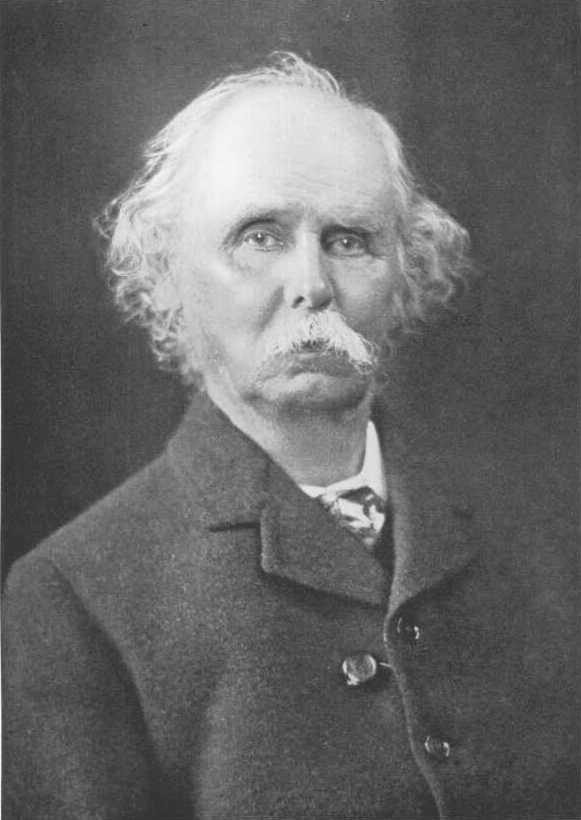
Figure 1.1: Image Sourced from Wikipedia.
The ordinary business of life:
- majors/minors in college
- degree level
- career
- dating and marrying
- vacations
- having children or not
- mortgage, renting
- car payments, public transport
- illness, elective surgeries
- retirement, unretirement
- etc, etc, etc, …
All of these are parts of life for most of us, ordinary life.
One of the greats of modern economics, Partha Dasgupta1, writes
“These are no mere academic matters. If welfare and development economics, more generally political philosophy, are not about the circumstances in which people are born and the manner in which they are able to live and die, they are about nothing.”
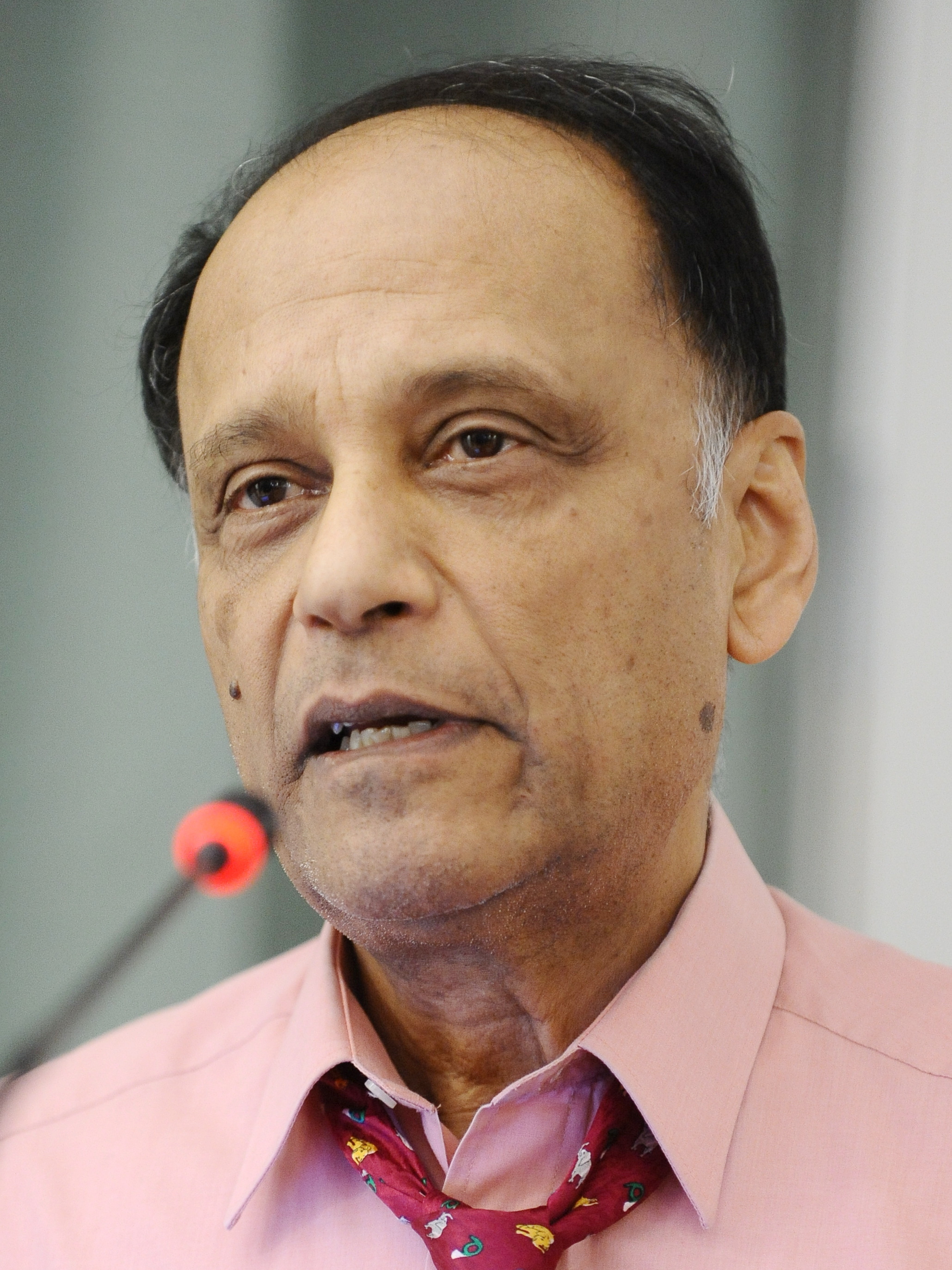
Figure 1.2: Image Sourced from Wikipedia.
Evidently economics is about life from the moment we are born to the moment we die. With all its joys, with all its triumphs, but also with all its challenges, struggles, defeats and tragedies.
This includes the preemies that are born weighing less than 2 pounds with their and their parents’ life-long struggle to flourish and to secure a comfortable life:
- How big are the medical bills?
- Does insurance cover them all?

Figure 1.3: Image Sourced from unsplash.
This includes the child born in the “wrong” ZIP code area. The child that is developmentally behind at age 3, the child who will have a hard time catching up scholastically, the child who as a young adult will have difficulty making ends meet because of the poor employment prospects.2
This includes the person who was repeatedly abused as a child and who because of this experience faces a higher likelihood to be a part of the prison system later in life.3 4
This includes the young person who graduated from college with huge student debt that is impossible to be paid back and that is very unlikely to be forgiven, even in bankruptcy.
This includes the parents of young children who are torn between going to work to pay the bills and staying home with their children because there is no reliable and safe childcare during COVID-19.


Figure 1.4: Images sourced from unsplash.
This includes the retired college professor whose physician tells him:
“Walter, with your lung cancer you have 6 months to live, on the outside. Now is the time to do the things you’ve always wanted to do but have never done.”
But who, the following morning, gets ready to go to his office, and when reminded by his wife of the physician’s advice that now is the time to do the things he always wanted to do, replies:
“That is exactly what I’m doing. I am doing what I’ve always wanted to do. I am going to the office to do my work.”
This includes the mother from Nicaragua, Guatemala, or Honduras, who flees with her children north, to what she thinks is a safer place for her children, knowing full well the meaning and implications for her of the term ``cuerpomatic’’5.
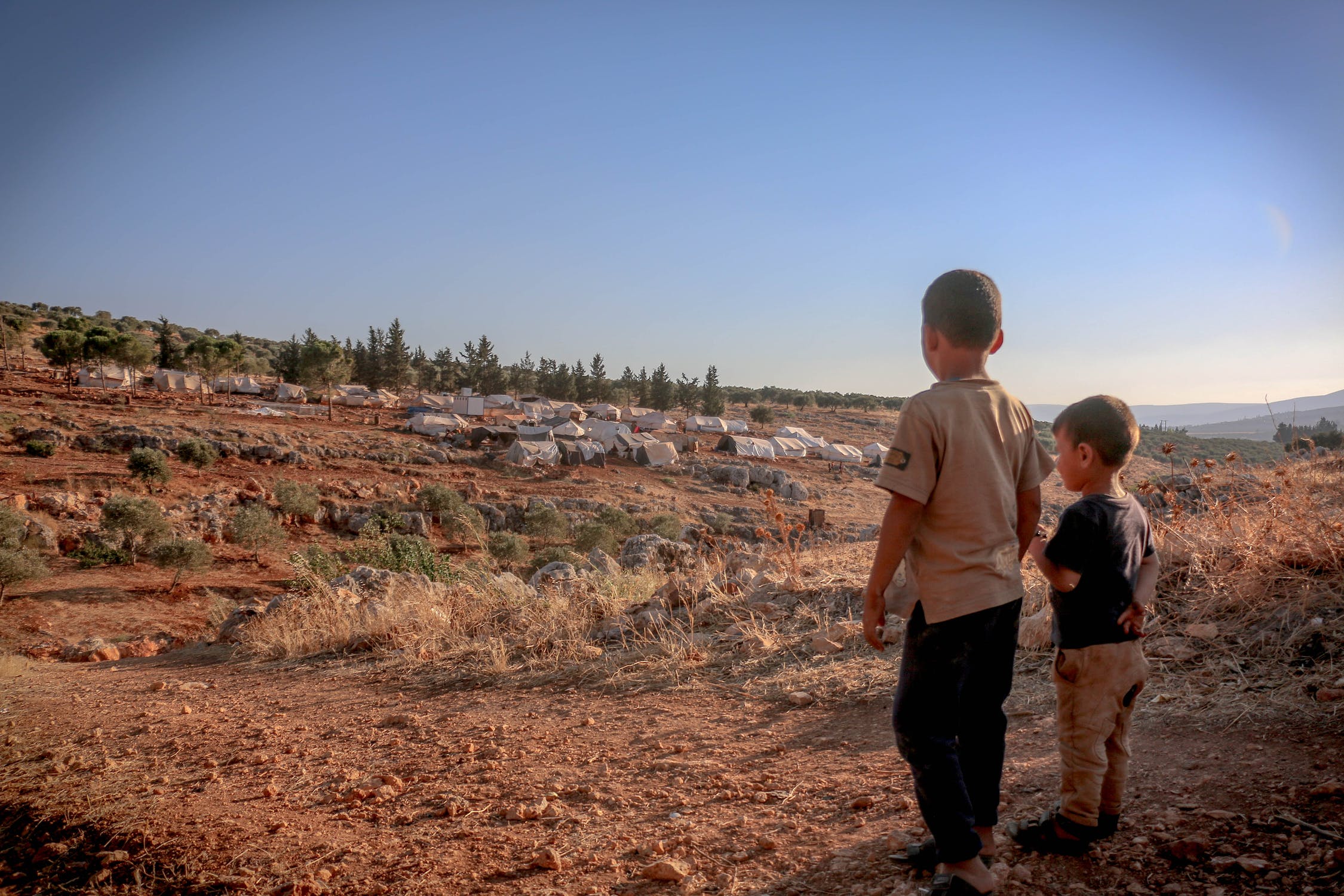
Figure 1.5: Image Sourced from pexels.
This includes things like positive assortative mating or “like marries like”. Tall men/women tend to marry tall women/men. Another way of saying this is: The height of married couples is positively correlated. Highly educated women/men marry highly educated men/women. The level of education of married couples is positively correlated. The level of incomes are positively correlated.6 It was not always like this.
This includes all those people who suffer from kidney failure, who are waiting for a transplant kidney, who may or may not get one. In this country, about 13 people die per day, because there are no transplants available.

Figure 1.6: Image Sourced from pexels.
Most textbooks define economics to be the study of the allocation scarce resources. A resource here is simply a means, something that is useful. Useful for a purpose. We usually assume that people have goals or purposes and that they will try to achieve these goals. But there are constraints that stand in the way.
Money is resource that allows us to buy stuff. For most of us money is scarce, our budgets are limited. Therefore, we must make choices:
- The fancy car or a super vacation?
- Paying the utility bill or paying the medical bill?
- A fancy wedding or a dream house?7

Figure 1.7: Image Sourced from pexels.
Time, perhaps our most valuable resource, is also scarce. You will surely notice this, as many have before you, during finals week. You will wish that there were five or six extra hours in each day.

Figure 1.8: Image Sourced from pexels.
Bandwidth, our ability to compute, to calculate, to process information, to decide rationally, is surely limited and many of us wish that our bandwidth were much, much bigger.
For an illustration of big bandwidth see this scene from the movie Searching for Bobby Fischer8
Many of us will, at some point hit emotional constraints. After strings of setbacks, failures, and disappointments, we will ask: “How much more can I take?” Suicide is arguably worst sign of emotional constraints, the ultimate of being at the end of one’s rope. Suicides have grown considerably in the 50 States9. There have been proposed policies which could decrease number of suicides10.
1.2 What is Economics Good For?
First and foremost economics, is a social science. We would expect economics to be good and useful in explaining behavior. When we look around, there are all kinds of interesting observations that we would like to explain. And economics can help us go a long way towards providing explanations for all kinds of behavior. Some examples where economics may have the potential to provide some explanations are:
- Why did grocery stores run out of toilet paper at the beginning of the COVID-19 pandemic?
- Why did women suffer more than men from the COVID-19 induced epidemic when normally in other recessions men tend to suffer more employment losses than women?
- Why are Dutch women taller than American women?
- Why do women when they buy a house from a man pay a higher price than a man and when they sell a house to a man they get a lower price than a man?
- Why did the price of bicycles rise during the COVID-19 recession?
- Why did the price of used cars rise during the COVID-19 recession?
- Why has the labor force participation of males been dropping for the last 20 or so years?
The question is always: Why? Why? Why?
Perhaps we can spend a little bit of time thinking about the following three examples of observations and ask why did these things happen?
- In Maine in the 1800s, lobster was used commonly to feed prisoners and it was used often for fertilizer on the fields. Why?
- In a recent 5K race in Bloomington, Indiana there were participants in basically all age groups from age 16 all the way up to age 80. This was true for both men and women with one exception. In the category Between age 30 and 35 there was not a single female participant. Why?
- According to some reports from field workers in a refugee camp for the Rohingya in Bangladesh, there were children older than five years of age and younger than 2, but there were no children between the ages of 2 and 5. Why?
We will see how economics can provide answers too many of these why? why? why? questions.
Economics can also provide answers to questions like what are the underlying assumptions that some individuals make under which their behavior might be rational.
Many years ago I, Gerhard, was caught speeding. I was actually going quite fast, which is usually something I do not do. But we were quite late for a meeting and missing the meeting would have been very costly. So, driving at very high speed under these circumstances actually makes a lot of sense. It was the rational thing to do.
On May 25, 2020, Amy Cooper, a white woman, let her dog off its leash in Central Park, New York, despite New York City’s leash law. Christian Cooper, a black male who was in the park watching birds asked her to leash her dog. Amy Cooper called the police alleging an “African American man” was threatening her. 11
Under what assumptions is the behavior of Amy Cooper in Central Park rational? This article digs into this. Rationality here and in the rest of these notes means:
Our actions are guided by a particular purpose or goal, taking into consideration all constraints and all relevant information.
Bryan Massingale in the article here list many assumptions under which Amy Cooper’s behavior in Central Park is actually rational. Her actions seem to make sense under the assumption, for example, that her word as a white female would have more weight than the word of a black male. Since she must have thought that any police officers, not a particular police officer, summoned by her would give more credibility to her word than to the word of a black male. She must have believed and hoped for what we would call systemic racism. Her actions make sense, her actions are rational, if she believes in systemic racism.
The second thing economics is good for is to evaluate policies. Policies are just the things institutions (or government in particular) do. The federal government determines spending on defense and Medicare. It regulates immigration to this country. The state government chooses educational policies and whether to legalize weed. A local government decides to fund public parks and bicycle paths. A country club determines the rules for the use of a golf course. A faith organization chooses particular youth programs. A corporation chooses particular human resources, HR, policies.
In each one of these cases we want to know:
- Does the policy work?
- Is it a good policy?
We want to be able to hold public officials accountable for the policies they pick. In order to be able to do this, we need to be able to figure out how people respond and react to these policies.
This leads us to a subject that is covered in the opening chapters of basically all introductory economics textbooks:
the law of unintended consequences
The law of unintended consequences simply states that when a policy is changed, people will respond to that policy change, and frequently in ways that are difficult to forecast by the policy maker. Of course, the more careful the policy maker thinks about possible responses of people to the change in the policy, the fewer surprise responses to the policy there will be. But it is a testimony to human ingenuity and creativity that even with the best intention the best laid plans of mice and men often lead to disastrous outcomes. My guess is that such adverse responses to policy changes will never be eliminated, even after the most careful analysis of the proposed policy change.
1.3 Unintended Consequences
It should not be a surprise that people will respond to changes in a policy. People simply do what they believe is in their best interest and when incentives change, chances are their behavior will change as well.
If I announce that in this class there will be a final exam that is comprehensive, that is the hardest exam on campus with a pass rate of only 30%, there are a variety of possible student reactions to this kind of an announcement. Some students will decide to study harder, some students might get a tutor, some students might decide to come to office hours more frequently. Some students might just give up, drop the class and wait until that class is offered by a different faculty member who has easier exams. This is just incentives at work. But we have to acknowledge that different students will respond in different ways and it is just extremely difficult to predict the behavioral response of a particular student or particular groups of students.
There are some interesting examples to unintended consequences.
1.3.1 Unintended Consequences Examples
(Epidemics I) I, Gerhard, heard of a convenience store in Virginia that had attached to it a video arcade with a separate entrance. During COVID-19, the convenience store was declared essential and allowed to stay open, the video arcade shut by order of the government. How did the owner of the convenience store and the video arcade respond to this government policy? He simply moved some of the video games into the convenience store, thereby increasing the density of customers in the store. Chances are the risk of infection increased.
(Epidemics II) 12 On March 11, 2020, President Trump announced a travel ban from most countries in Europe to be effective March 13th and to last 30 days. If you are an American traveler in Europe, how would you respond to this announcement? If you are an American tourist in Europe, how would you respond? If you are an American on business in Europe, how would you respond? Or, if you are an American student on an exchange program how would you respond?
Regardless of your original plans for your return trip, you might well conclude that the best course of action for you is to hightail it home as quickly as you possibly can.
Evidently, many Americans decided that this was indeed their best course of action, so they changed their plans and returned home as quickly as possible. As a consequence, American airports on March 12 and 13 were overcrowded, contributing to the further spread of the virus. Perhaps this crowding might have been avoided to some degree by more carefully planning the return flights and spreading out the arrival of these flights over time.
(Work Incentives) During the financial crisis of 2008 and 2009, governments in many affected countries designed rescue packages in order to bailout banks, at least the largest banks. Some of these rescue packages contained explicit caps on bonuses for banking executives. If the government imposes caps on those bonuses, how might banks respond to such limitations? Well, if I cannot reward my employees through higher bonuses, I can still reward my employees by increasing their base salaries. To the extent that the bonuses are used to reward exceptionally good performances and thereby provide incentives for such exceptionally good performance, this cap on bonuses seems to have one adverse effect: weaker incentives for exceptional performance. Not sure if that is what you want.
(Health) Imagine you are concerned with excessively long waiting times at emergency rooms in the hospitals in your state. Suppose you want to design a scheme that rewards hospitals to decrease those waiting times. So, you collect the data on average waiting times in these emergency rooms and then you design rewards for those hospitals who reduce the waiting times the most. If you measure waiting time from the moment the patient comes through the door to the time the patient is treated, how might hospitals actually respond to this new policy? Hospitals might ask the ambulances to wait in the hospital parking lot. Surely this is not a desired outcome.
Figure 1.9: Image Sourced from unsplash.
(Education) 13 Supposed you want to reward teachers for better performances of their students on standardized tests. Suppose the stakes, the rewards are big. How might the teachers respond to these incentives? Surely there are many possibilities.
Some teachers might better prepare their lessons.
Some teachers might spend more time with students who are struggling.
But some teachers might also provide caffeinated sugary drinks to their students the day of the test to get a short time boost in attention and concentration to improve their performance. I suspect the dentists will love this.
Or, and this is an extreme case, some teachers might actually be induced to cheat on behalf of their students. One example of teachers engaging in such cheating is documented in the first book Freakonomics.
(Gender) 14 Family leave policies are intended to allow moms and dads to spend quality time with their new-born babies. In many places/organizations there has been a gradual shift from no leave, paid or unpaid, to maternity leave for the mom to family leave for both mom and dad, when a baby is born. In some organizations there is still no maternity or family leave policy in place and women have to take sick days or personal days to deliver their baby. At a typical university maternity or family leave is tied to “stopping the tenure clock”. Stopping the tenure clock simply means, that mom and/or dad have extra time, often one year, to be considered for tenure. Tenure basically ensures lifetime job security. It is a BIG deal.
Allowing dads time off and stopping the tenure clock for dads as well as for moms is often seen as a great equalizer of men and women, dads and moms. After all, now dad can spend time with his baby as well. What could possibly be or go wrong with that?
The paper cited shows that the policy of providing gender neutral family leave and stopping the tenure clock in a gender-neutral way, increases dad’s chances of tenure by 19 percentage points and decreases mom’s tenure of tenure by 22 percentage points.
So much for achieving gender neutrality!
(Gender II) 15 The German government passed a law that grants automatic German citizenship rights to all immigrant children born in Germany after January 1, 2000. You might think that such a law would benefit all immigrants regardless of country of origin, skin color, religion, sex, gender identity and age. Why? It is just a right. The law increases the realm of the possible. It increases opportunities. It does not take away any opportunities. What could possibly be wrong with more choices, more opportunities? So, one would be inclined to think that all immigrants would be better off and report being happier. And in that believe we would be wrong. Why? The law of unintended consequences strikes again.
Self-reported happiness declined after this law was passed for Muslim girls. Muslim immigrant girls become disillusioned. Muslim parents are less likely to help their daughters who qualify for citizenship with their homework. They are also less likely to speak German with their daughters. Muslim immigrant girls who qualify for German citizenship are less likely to self-identify as German.
The law of unintended consequences truly rears its ugly head.
None of these effects are found for Muslim boys. None of these effects are found for children of other faiths.
Why do we find these effects for Muslim immigrant girls? Parents of Muslim immigrant girls react strongly to counteract the pull of German society to keep their daughters withing their cultural and religious traditions.
1.3.2 Exercises
-
Suppose a state government passes a law that allows for “No knock warrants”. See here if you are unsure what this is.
A. Make a list of the possible “unintended consequences” of this policy.
B. Who would get impacted by this policy? Positively or negatively?
C. How hard is it to foresee/forecast these consequences? -
President Trump issued an Executive order on June 22, 2020 to severely limit H1-B and L1 visas. H1-B visas are visas issued so American companies can hire high-skilled immigrants. L1 visas allow American multinational corporations to transfer foreign managers and employees to their offices in the US. 16
A. Make a list of all the effects of this policy. Who would get impacted by this policy? Positively or negatively?
B. How hard is it to foresee/forecast these consequences?
1.4 Role of Theory
What is the role of theory in economics?
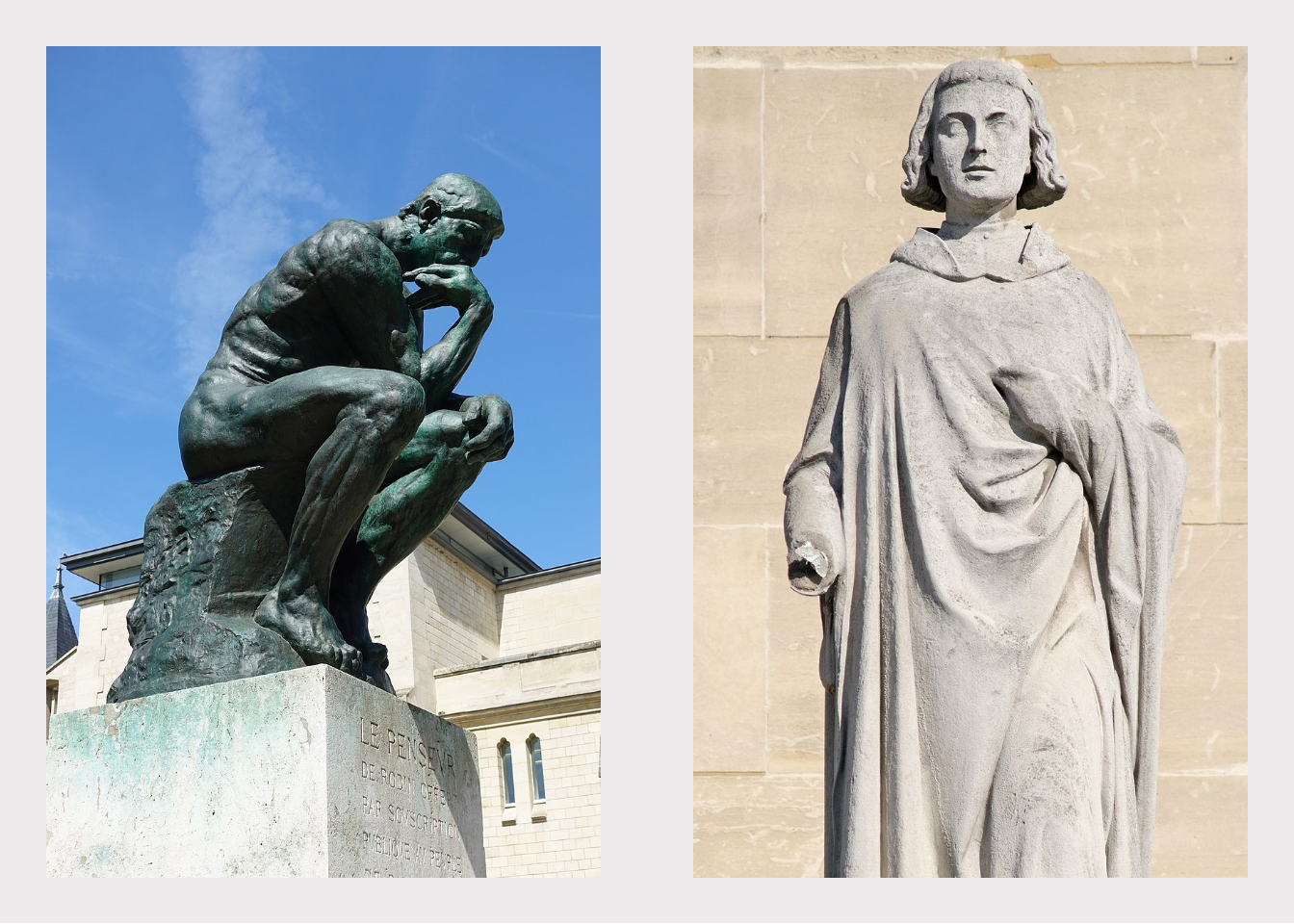
Figure 1.10: Images sourced from wikimedia commons. Statues of The Thinker and Peter Abelard.
A quote by a 12th century philosopher, Peter Abelard:
“The man of understanding is he who has the ability to grasp and ponder the hidden causes of things. By hidden causes we mean those from which things originate, and these are to be investigated more by reason than by sensory experiences.”
We can paraphrase this by saying: If we want to understand stuff, we ought to rely more on our brain and think more about how things might actually work, rather than collecting data with our senses.
Charles Darwin, in a letter to one of his friends expressed a similar opinion:
“About thirty years ago there was much talk that geologists ought only to observe and not theorise; and I well remember someone saying that at this rate a man might as well go into a gravel-pit and count the pebbles and describe the colors. How odd it is that anyone should not see that all observation must be for or against some view if it is to be of any service!”

Figure 1.11: Image sourced from wikimedia commons.
Go enjoy counting the pebbles!
I interpret that last clause in Darwin’s letter to mean: All observations must be used to either confirm or reject a hypothesis or theory, if the observation is to be of any use at all. That implies that theory comes first.
So, what is this thing called a “theory”? I will use the words: theory, model, and abstraction synonymously. A theory is a creation of our minds; it is an idea of how some part of the word operates or might operate.
Theories used in economics will be different than in theories used in physics. Even within economics there will be different theories or models. Macroeconomists will use different models than economists who study anti-trust. The main job of a model is to help us understand how a part of the world works. Any theory or model is supposed to be useful, for understanding.
1.4.1 Abstractions
How is an abstraction useful? Suppose the job is to drive from Indianapolis, IN to Columbus, OH. We need a map to help us get there.
Above we have a map. It has all kinds of information. A bunch of cites like Detroit, Gary, Fort Wayne, Cincinnati. State Forests, State Parks. Lake Erie, Lake Michigan. Much of this information is not relevant if the task is to get from Indianapolis to Columbus.
In order to get from Indianapolis to Columbus, not much information is needed. Most, practically all of the information above is useless and needs to be discarded. Pretty much the only information needed is illustrated below. All we need is the starting point, Indianapolis, the endpoint, Columbus, and the instructions to get on I-70 in Indianapolis until the sign “Columbus, OH” appears. This is really all that is essential.
Indianapolis—————————I 70———————————Columbus
There are a few more things that one might reasonably add to our “model” of the relevant piece of geography. It might be useful where the gas stations are, especially the ones with clean bathrooms, and where the coffee shops are so the driver does not fall asleep. One such establishment, marked by G for gas station, is added in the model below.
Indianapolis—————————I 70——————–G———–Columbus
1.4.2 Prejudice-Based Wage Discrimination
How to find prejudice-based wage discrimination?
In this example we will try to show that economic theory can generate useful insights or knowledge. The way this works in this example is that economic theory will suggest precisely where we have to look for evidence. The issue or example that we will use here is the question: How, if, and to what extent does racial prejudice show up in, or generate wage discrimination by race?
The work in economics on racial discrimination goes back at least to the seminal work by Nobel Laureate Gary Becker from the University of Chicago17.
For starters, we have to distinguish between prejudice and wage discrimination. Prejudice is an attitude, a negative attitude, a sentiment toward a particular group of people, Blacks for example. Wage discrimination is a particular outcome in labor markets that simply says comparable blacks and comparable whites receive different wage rates.
The question then is: How, to what extent, if at all, does racial prejudice determine such wage discrimination?
In order to start thinking about this issue, we will consider a very simple example. Blacks make up about 10% off the population or the labor force. There are two distinct labor markets. In labor market 1 the population of white people exhibits basically no racial prejudice. In labor market 2, the population of white people exhibits very strong racial prejudices.
In which labor market would we expect wage discrimination by race to be strongest? Labor market 1 or labor market 2?
Without a moment’s thought most of us would be tempted to say: Of course, racial discrimination is higher, stronger, worse in labor market 2 than in labor market 1.
But that would be missing an element of the story that probably is very important.
Blacks will most likely know or at least have some pretty good information on where the racists live, in which labor market they operate. Why would they know this? Chances are they have experienced the manifestations of racism and through their social network this information is broadly shared.
So, to the extent that blacks have information on manifestations of racism and to the extent that they are free to move between labor markets, to choose their place of employment, they will probably move from labor market 2 to labor market 1. This is of course, is with holding other things equal. Holding other things equal just means that in all other aspects these two labor markets are roughly comparable. They only differ in this one aspect: prejudice.
So, if blacks can move freely, relatively freely, they will choose labor market 1 over labor market 2 in which case there might be very little racial wage discrimination in labor market 2. If all Blacks where to move into labor market 1, then there would be no racial wage discrimination in labor market 2 at all.
Therefore, our answer that labor market 2 will exhibit more wage discrimination than labor market 1 is probably false.
There is a recent paper linked here, together with a short video by one of its authors below, that uses currently available data to show us exactly where and how we should look for the impact of prejudice on labor market discrimination.
We start with constructing a racism distribution. This is not just some fancy Ivory Tower notion. This distribution is firmly grounded in data. There is a data set that is widely available, called The General Social Survey, GSS, that asks questions like:
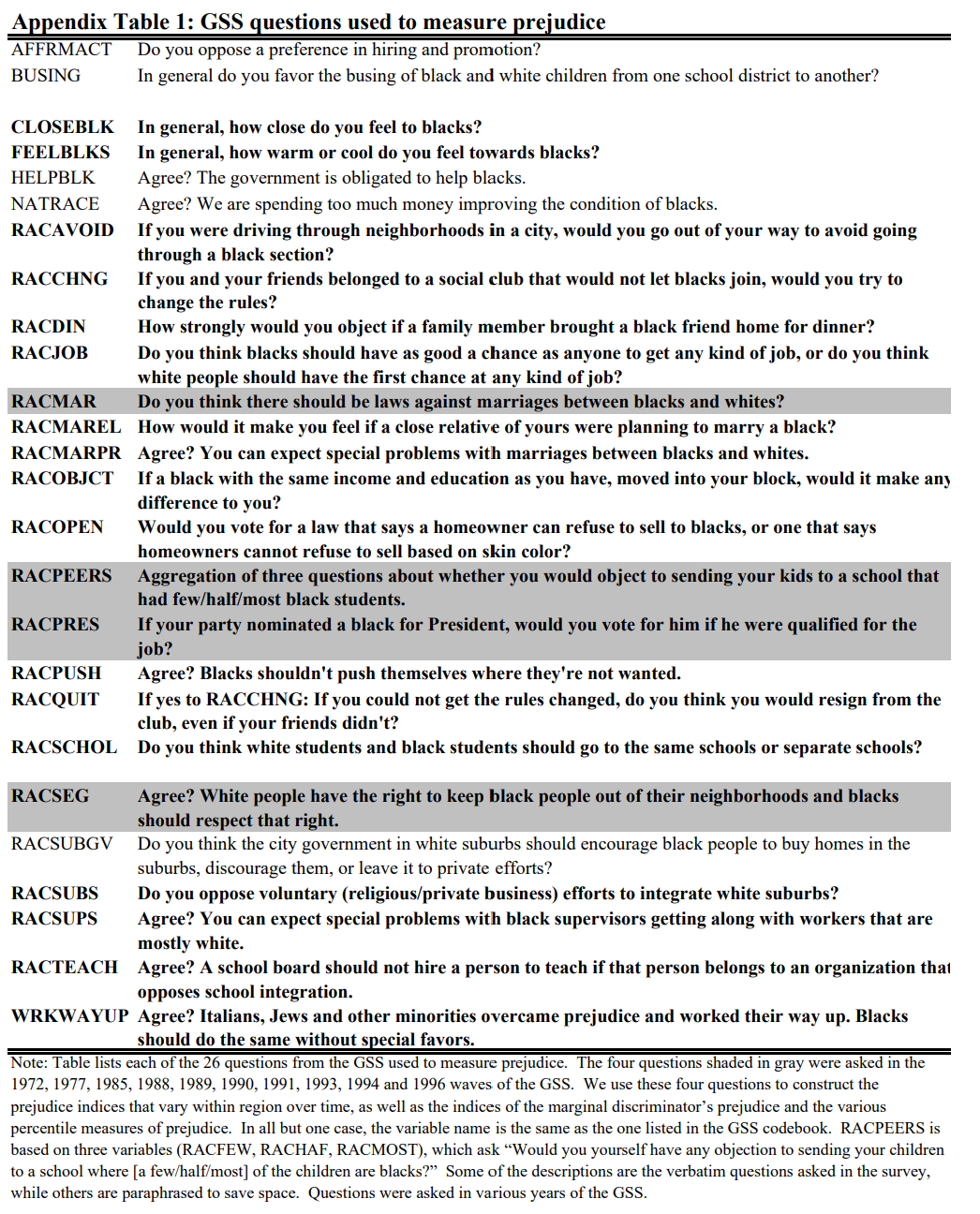
Figure 1.12: Table from Prejudice and the Economics of Discrimination by Kerwin Kofi Charles and Jonathan Guryan.
The authors use only the questions in bold for their purposes since the non-bold questions might elicit answers that are not purely guided by racist sentiments.
Answers to questions like these can be put together to create an index of racism and then a distribution of racism in a particular locality. The figure below illustrates such an example off a racism distribution.
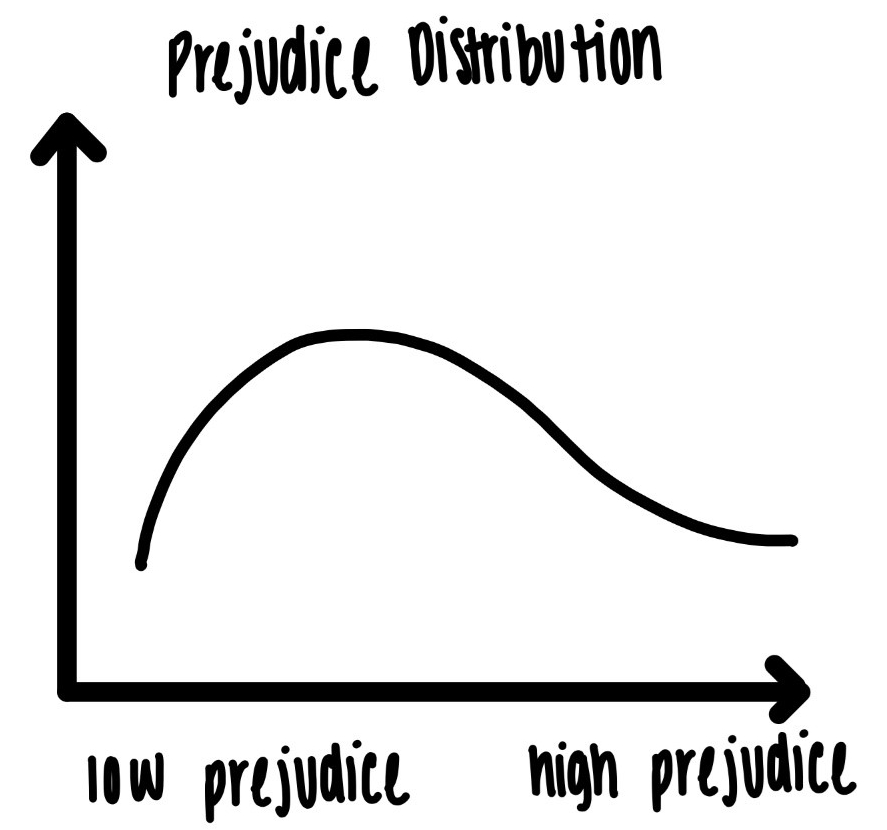 Some researcher suggests that in order to assess the impact of prejudice on wage discrimination one should look at a correlation between the average or median degree of prejudice and the average level of wage discrimination. They collect the best data available for the 50 States and calculate or estimate that correlation. They find nothing.
Some researcher suggests that in order to assess the impact of prejudice on wage discrimination one should look at a correlation between the average or median degree of prejudice and the average level of wage discrimination. They collect the best data available for the 50 States and calculate or estimate that correlation. They find nothing.Why?
Just like in the example with 2 labor markets, Blacks will, if they can, avoid the right tail of the racism distribution. It is certainly in their interest to do so. They will shift to the left, i.e. seek employment, as far as possible in the racism distribution.
In Wisconsin, about 6% of the labor force is black. If they all seek employment, they would be matched with some, mostly likely white, employer. If we line up all white employers on a racism distribution, with the least racist employers on the left and the most racist employers on the right, then black workers would seek employment as far away from the most racist employers as possible. Black workers would go to the left of the racism distribution as much as possible. Since Blacks in Wisconsin make up 6 percent of the population, these 6 percent would then be seeking employment from the 6 percent of the least racist employers. Since Blacks are seeking employment as far to the left tail of the prejudice distribution as possible, then it is the 6 percentile of the prejudice distribution that matters for wage discrimination. Not the average, not the median. The 6th percentile.
In Mississippi, about 34% of the labor force is black. In Mississippi, wage discrimination is determined by the 34th percentile of the prejudice distribution. Not the average, not the median, not the 6th percentile. The 34th percentile.18
So far, we have not looked at any data; so far this is all theory.
What is in the data?
When you look for the connection between prejudice and wage discrimination by looking at averages you find nothing.
But when you look for it in the way suggested by the theory, the 6th percentile of prejudice distribution in WI, the 34th percentile in MS, then BINGO! There it is, clear and significant evidence linking prejudice to wage discrimination. You just need to know where to look. Theory helps.
1.5 Dealing with Data
1.5.1 Empirical regularities
First of all, we note that we are more interested in empirical regularities rather than in singular observations. Jennifer being 5’4” is an example of a singular observation. That is only one observation. “Dutch women are tall” is an example of an empirical regularity. More precisely the average height of Dutch women is 5’7”, compared to the average height of American women which is 5’4”. This observation is more general. We would find this if we looked at a sample of women from Amsterdam, from Rotterdam, from The Hague, etc.
Rich people live longer than poor people.
This is a fact, in Indiana, New Jersey and in Kentucky. It is also true in France and in Japan.19
The sex ratio in the US is 1.04. The sex ratio is the ratio of the number of women to the number of men. For each 100 men in this country there are 104 women. If you look up this ratio by State, there is some variation. For most states, there are more women than men. But there are exceptions. In some Western states, there are more men than women. These exceptional states include Alaska, Montana, Wyoming. You may want to ask why there are such large differences in sex ratios across the 50 States.
Numbers: Big or small?
One of the important issues we have to discuss is: Are numbers big or small. This is especially true when we are talking about dollars, taxes, expenditures, the size of government programs.
1.5.1.1 Examples
(Earthquake Relief) After the Haiti earthquake in 2010, the US government committed $100 million in earthquake relief. Big number or small number? It might look like a big number. But when you consider that there are over 300 million Americans, we realize that each of us gave about 30 cents, which looks miserly. Of course, this does not include private charitable contributions.
(Apollo Mission) 20 The cost of the Apollo mission which ultimately landed a man on the moon has been estimated to be about $150 billion dollars, (adjusted for inflation) in 2019 dollars. In 2019, the White House made a request to combat deaths from illicit opioid abuse to the tune of $7 billion. In 2021 over 100,000 people died from drug overdoses. Is $7 billion a big number or a small number?
(Vaccine R&D) According to an article in The Economist, August 8-14, 2020 world- wide spending on research for a COVID-19 vaccine was about $10 billion. Sure sounds like a heck of a lot of money. But! Just in the US, the number of people who have died, at that time, was about 100,000. At the time of this writing that number has surpassed 900,000 COVID-19 deaths. The value of a statistical life21 in the US for the median age American is about $10 million. Since COVID-19 takes mostly older people we might use $5 million for the value of an older statistical life. The typical failure rate in late stages of vaccine trials is about 20%. Multiplying the value of an older statistical life by the number of Americans who died because of COVID-19 we get:
\[ \$100,000 \times 5 \times 1,000,000 = \$ 500 \ \ \text{ billion} \]
COVID-19 does not only kill Americans. We now know that the death toll is much higher. The question is: Is the $10 billion expenditure noted above a big number or a small number? Or: Should we have spent more on vaccine research in 2020?
1.5.2 Correlation vs Causation
This distinction is crucial. Knowing whether 2 variables are correlated is useful, but it is not enough. In order to make any kind of policy decision we must know causation. Correlation only tells us about a statistical relationship. Two variables may be positively correlated or they may be negatively correlated. Suppose variable X is positively correlated with variable Y. Then if X is large (small), then Y is large (small) as well. If the two variables X and Y are negatively correlated, that means that If X is large (small), then Y is small (large). Of course, there is also the possibility of no correlation.
- Our typical calorie intake is positively correlated with my body weight.
- The time students spend studying for Finite Math exams may be negatively correlated with the grades in English classes.
- Whether students are vegetarians or not is (I suspect) not correlated with their grades in introductory History classes.
We can think of these correlations as patterns in the data. They tell us nothing about causation.
Causation is an altogether different story. Causation means that one event leads to another. The event “An increase in the price of socks”, will lead to the event “I buy fewer socks”. We will talk about this at some length in this class.
The event “90 percent of Americans getting the COVID-19 vaccine” will lead to the event “Americans achieve herd immunity”. Is this a dream?
The event “Driving like a maniac on the interstates” leads to the event “The probability of fatal car crashes rises”.
There are lots and lots of examples like this. We need to be able to infer causality if we want to have any hope that the policies we pick actually make things better.
If two variables, X and Y, are positively correlated, there are several possibilities concerning causation:
- X could cause Y: an increase in X could cause an increase in Y. An improvement in nutrition in childhood causes an increase in adult height. There is no way adult height could influence the quality of childhood nutrition.
- Y could cause X: an increase in Y could cause an increase in X. An improvement in nutrition in childhood causes an increase in adult height. There is no way adult height could influence the quality of childhood nutrition. (noticed this is just the same example as 1.)
- X could cause Y AND Y could cause X: You study hard for your econ class and as a consequence you do well in the class. And: Since you do well in your econ class, you like econ and therefore you study harder. The hard part might be to find out which effect is stronger.
- X does not cause Y, nor does Y cause X. But there is another variable, Z, that causes both X and Y. Education and smoking are negatively correlated. Typically people with many years of education are less likely to be smokers. It might be the case that education does not cause smoking. It is hard to imagine that smoking has a causal effect on education. The variable Z that causes both education and smoking is the underlying degree of patience. If I am very patient I can put up easily with an annoying econ teacher in the hope of getting high rewards from education, even in the distant future. If I’m not patient, I need that cigarette now, even if I am well informed about the high risk of dying from lung cancer 30 years down the road.
In order to tease causation out of the data, we try to create what we call a parallel universe.
The point of this parallel universe is to look at two cases, two “universes” that are equal in all aspects except one aspect, the aspect we want to study.
1.5.2.1 Examples
(Stand Your Ground) 22 Suppose I want to study the effect of the Florida “stand your ground law” on homicides in Florida. Then I will collect all kinds of data for Florida. And I will collect the same kind of data in similar states. It would make little sense to compare Florida to Norway. But comparing Florida to states with similar income distribution, similar ethnic composition, similar poverty rates, similar age distribution makes sense. Like Georgia, Alabama, Arkansas.
Then we can compare homicide rates in Florida to those in other states that did not pass stand your ground laws. That is one difference we can exploit for our analysis. The other difference we can exploit for our analysis is to what happened to the trend in homicides before and after the law was passed.
The conclusion that emerges in this case is quite shocking: It appears that the stand your ground law has caused an INCREASE in homicides.
(Gender II Revisited) 23 In the Gender II example in the Law of Unintended Consequences examples above, how could the researchers “establish” or “find” a parallel universe? Sometimes you are just lucky. The law applied to all immigrant children born after January 1, 2000. The law separates those immigrant children born before that date from those born after that date. Children borne 6 months before and children borne 6 months after will be in the same school grade. They will be very, very similar in all or at least most other aspects. The fact that the law kicks in January 1 is very fortuitous for researchers. It creates almost ideal conditions to have a treatment group and a control group. Having a treatment group and an identical control group is what we mean by having “a parallel universe”.
Plastic Bag Ban 24 In 2015, the City of Chicago banned all single use plastic shopping bags that were less than 2.25 mils thick. All other bags were unregulated. What are the consequences of this ban?
Short answer: Stores responded by using bags that are still made of plastic and that are thicker and therefore use MORE plastic. Another unintended consequence.
Unintended consequences seem to be everywhere.
How would we know? How can we infer causality? Where are the parallel universes? Where are treatment and control groups?
The researchers reasoned that stores just inside city limits ought to be very similar to stores just outside the city limits in the suburbs. The researchers also reasoned that shoppers just inside the city limit are very similar to shoppers just outside the city limit. So, data from just outside the city limit can serve as a parallel universe to what is going on inside the city limit.
There is more: Stores and shoppers just before the ban and just after the ban are going to be very similar. So, in addition to the comparison of inside and outside the city limit we have the comparison of just before and just after the ban. Looking at these two comparisons allows the researchers to nail down the effect of the ban: Disposable bag use remained very high. Many grocery stores just used bags that were just thick enough to be above the limit.
(Health Effects of Lead) 25 26 How damaging to your health is lead? This is a big question. Most rich countries have tried to eliminate lead from gasoline and from paint. Lead is often still found in drinking water. How does lead get into your drinking water? Through the lead pipes.
We can narrow down the question a bit: How damaging is lead from drinking water to your baby’s health?
The paper below provides an answer by considering a natural treatment and control group, or, in our language, a parallel universe. We find the parallel universe in Newark, NJ. The city was served by two different water treatment plants, with the service boundary of the two plants being basically an arbitrary line running across the city. An accident (bad decision?) in one treatment plant caused excessive corrosion and, as a consequence, excessive exposure to lead in one part of the city. This excessive exposure to lead increased the probability of low birthweight babies by between 1.4 and 1.9 percentage points. This is an increase of between 17 and 22 percent.
Exploiting such parallel universes can, evidently, be quite useful.
1.6 Glossary of Terms
Causation: one event leads to another or that a change in one variable leads inexorably to a change in another variable.
Correlation: describes the linear relationship between two variables. It is normalized to take values between +1 and -1. This is only a description of the relationship between two variables. It has no implications for causality.
Constraint: a limit on what is possible. Eg: financial, physical, emotionally, etc.
Law of Unintended Consequences: any action, any change in a policy or in a rule is bound to have consequences which are difficult to foresee before or when the action or change in policy or rule is put into place.
Parallel Universe: a scenario in which data sets would be equal in all dimensions except the one that we are studying. This is in order to determine causality.
Scarcity: available resources falling short of the wants, needs, or desires of people
Theory: a mind construct of how a part of the world may work. The point of a theory is to help us understand that part of the world. A synonym for theory is “Model”.
1.7 Practice Questions
1.7.1 Discussion
- Can you think of an example from your personal life where you made a decision with the best of intentions that lead to unintended adverse consequences? Why did these consequences happen?
- A university professor announces on the first day of class that the final exam in the class will be the hardest exam the students will ever face. How might students respond to this announcement? How would you respond?
- The Federal government announces that international students are not allowed to enter the country if the university of their choice is teaching 100% of its classes online. How might universities respond to this announcement?
- The US government prohibits the importation of fentanyl into the US. How might the international suppliers of fentanyl respond to this policy?27 28
- When does the world run out of oil? The known reserves of oil underground world-wide is 531,000,000,000 barrels. The annual consumption of oil word-wide is 16,500,000,000 barrels. Given these two numbers, when will the world run out of oil. What theories/models, assumptions did you use to arrive at your conclusion?
- In your own words, explain why theories have to be abstractions. Provide one example of a theory not mentioned in class that is an abstraction and useful.
- Provide a theory of why men are taller than women.
- Provide a theory of why Dutch women are taller than American women.
- Why was Italy the first European country to experience a major COVID-19 outbreak?
- Can you provide an example of a model that is false, but useful? What is the model used for? Why is that model false?
- Why are there more women alive in the US than men?
- Provide a list of statements you have heard that are “not even false”.
- Imagine you obtain data on how many hours Indiana University students study for Finite Math and their grade in Introductory English. Would you expect these two datasets to be positively or negatively correlated. Explain.
1.7.2 Multiple Choice
-
A theory is
A. An abstraction
B. Realistic
C. Consistent with observations
D. Verifiable -
A university professor announced on the first day of class that the final exam in her class is the hardest final the students will ever have on campus and that the pass rate on that exam is typically about 35 %. The following are ways students might respond to this announcement.
A. Some students will drop the class
B. Some students will decide to study harder for the final
C. Some students study habits are unaffected by this announcement
D. All of the above -
Economics can be considered the study of the allocation of ____ resource.
A. Ample
B. Scarce
C. Sufficient
D. Abundant -
Hermannus goes on nice vacation along the Norwegian fjords. The price of the vacation is \(\$2000\). While on vacation Hermannus forgoes his income being a tutor for medieval German. That forgone income is \(\$500\). Hermannus’ opportunity cost of the Norwegian vacation is
A. 0
B. 500
C. 2000
D. 2500 -
In the 1800s in Maine, lobster was used for fertilizer. Why?
A. It was widely available compared to other fertilizer options
B. It was more expensive than other fertilizer options
C. It was harder to obtain than other fertilizer options
D. Your TA likes lobster -
The country of Superintelligentia wants to improve educational outcomes. To that end the country decides to provide special rewards to teachers if their students perform well on national standardized tests. Which of the following is probably not a consequence of this policy reform?
A. Teachers try to cheat for their students
B. Teachers offering extra tutoring help for their students
C. Teachers working harder to prepare their classes
D. Teachers retiring early -
The law of unintended consequences
A. Is of no practical consequence
B. Is becoming less and less important as we have more and more date to analyze
C. Is a reflection of our incomplete understanding of human behavior
D. Was passed by the State Legislature of Indiana in 1982. -
A country is spending \(\$10\) billion on research for an effective coronavirus vaccine. That vaccine, could save potentially 50,000 people. If the value of a statistical life is $ 5 million, then
A. The country should spend more on research
B. The country should spend the same amount on research
C. The country should spend less on research
D. The country should ask Brazil to fund research -
The mythical country of Cleanlandia annually spends $ x on enforcing legislation that keeps their air clean. You could determine whether that expenditure is large or small by
A. Calculation the expenditure on similar enforcement in that country 50 years ago
B. Calculating the equivalent expenditure in some other country
C. Calculating that expenditure per inhabitant of Cleanlandia
D. Calculating that expenditure in Canadian dollars -
The point of creating “a parallel universe” is to
A. Detect a correlation between two variables
B. See a pattern in the data
C. Create a stimulating environment for video game games
D. Detect causation in two related variables -
The point/goal of a theory/model is
A. To be realistic
B. To be mathematically elegant
C. To help understand the complex relationships between variables
D. To be as general as possible -
When teachers are rewarded through bonuses or higher salary increases for higher test scores of their students, teachers
A. Have an incentive to seek employment in schools with more gifted students
B. Have an incentive to cheat on behalf of their students
C. Feed sugary caffeinated drinks to their students
D. All of the above -
A theory should be
A. general
B. elegant
C. useful
D. technical -
Causality can be established by
A. creating a histogram
B. establishing a positive correlation
C. establishing a negative correlation
D. creating a parallel universe -
The law in Indiana allows people to have a petting zoo with large cats as long as the cats do not weigh more than 45 pounds. One of the consequences of the 45 pound legal restriction is that
A. the cats are well fed
B. the cats are undernourished
C. the cats will be regularly vaccinated
D. the cats are healthy -
The City of Bloomington removes homeless people from People’s Park. As a consequence of this action
A. homelessness in Bloomington increases
B. homelessness in Bloomington decreases
C. homeless people in Bloomington will search out another park nearby
D. homeless people will move to Columbus -
The US government imposes a tariff on t shirts made in China. This tariff acts just like a tax on these t shirts. As a consequence of this tariff
A. Americans will by more t shirts from China
B. Americans will by more t shirts from Bangladesh
C. Americans will produce more t shirts
D. Americans will buy more t shirts -
The US government imposes a tax on all polluting activities in the US. As a consequence of this tax
A. pollution in the US goes up
B. polluting production moves overseas
C. goods get cheaper
D. pollution overseas goes down -
An instructor at IU announces on the first day of class that all lectures will be recorded and that all lecture notes, all power points and all recordings will be posted on canvas in a timely manner. As a consequence of this announcement
A. students will get better grades
B. students will get worse grades
C. students will attend class less
D. students will attend class more -
The hair color of the instructor for this class is
A. black
B. green
C. purple
D. none of the above